The secret of the long-term stable operation of the slitting machine lies in the organic combination of material selection, structural optimization and scientific maintenance. The following is a detailed analysis of these three dimensions:

First, the golden rule of material selection
1. Material standards for core components
• Tooling system: powder metallurgy high-speed steel (such as ASP-23) or nano-coated cemented carbide with hardness of HRC62 or above
• Guide roller assembly: 42CrMo quenched and tempered steel, hard chrome plating (thickness≥0.05mm)
• Bearing housing: QT600-3 ductile iron is recommended, and the tensile strength ≥ 600MPa
2. The principle of matching material properties
• Friction pair pairing: follow the principle of "hard to soft" (e.g. ceramic knife shaft with copper alloy bearing sleeve)
• Coefficient of thermal expansion: When the temperature difference of adjacent parts ΔT≤ 30°C, the difference of expansion coefficient should be <1.5×10⁻⁶/°C
Second, the 7 key points of structural design
1. Stress dispersion design
• Box-type rack with wall thickness ≥ 25mm
• The angle of the stiffener of the key parts is 45±5°
• Dynamic equilibrium level must be G2.5 (ISO1940 standard)
2. Modular design
• Toolholder module replacement time≤ 15 minutes
• Quick-release pneumatic locking device (working pressure 0.6-0.8MPa)
3. Thermal management design
• Spindle temperature rise control: ΔT≤15°C (at room temperature 25°C)
• Equipped with circulating oil cooling system (flow rate≥ 20L/min)
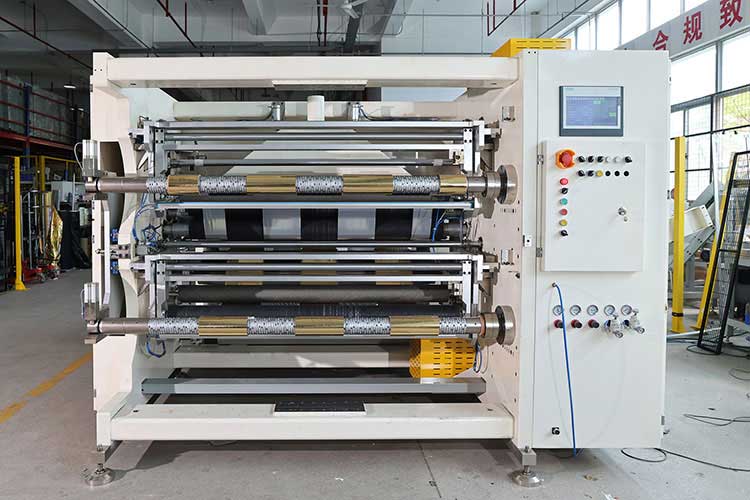
Third, precise cycle of maintenance
1. Hierarchical maintenance system
• Routine maintenance (every 8 hours):
◦ Knife cleaning (with a special cleaning agent)
◦ Rail lubrication (ISO VG68 lubricating oil)
• Preventive maintenance (every 400 hours):
◦ Bearing clearance detection (radial clearance ≤0.02mm)
◦ Belt tension test (deflection ≤ 15mm/10N pressure)
2. Key parameter monitoring thresholds
• Vibration monitoring: tool shaft vibration speed≤ 2.5mm/s (RMS value)
• Temperature alarm: Bearing temperature ≥ 75°C triggers a secondary alarm
• Accuracy attenuation: If the slitting accuracy error exceeds ±0.15mm, it needs to be calibrated immediately
Fourth, engineering solutions for common faults
1. Strip trimming burrs
• Priority check: tool runout (should be ≤ 0.01mm)
• Solution: Use negative rake angle tool (γ=-5°~-8°)
2. Reel serpentine mistracking
• Adjustment sequence: Correct the parallelism of the guiding roller first (≤0.03mm/m)
• Recheck the barometric pressure value (0.4±0.02MPa)
3. Abnormal vibration handling process
(1) Mark the phase immediately after the shutdown
(2) Priority check coupling alignment (deviation≤0.05mm)
(3) Finally, the dynamic balance is corrected (residual unbalance≤ 1g·cm)
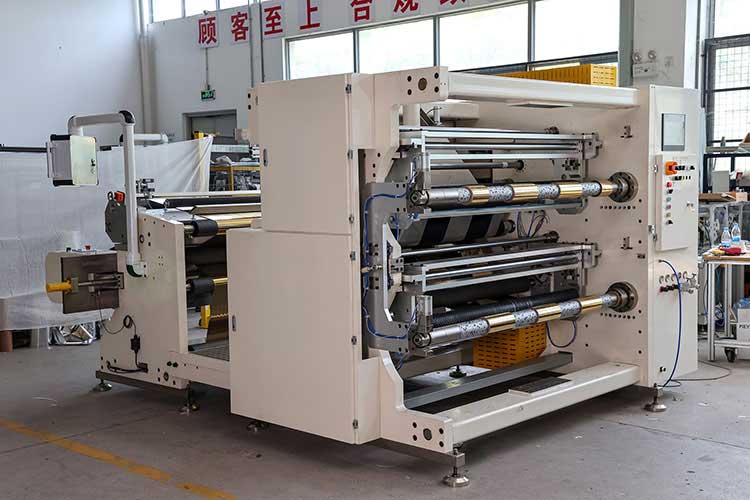
Fifth, suggestions for intelligent upgrades
1. Install a condition monitoring system
• Recommended sampling frequency: 10kHz for vibration signals≥
• Temperature monitoring point: bearing/motor/hydraulic station must be measured at three points
2. Predictive maintenance implementation
• Vibration trend model (500 hours of data ≥ recommended)
• Set three-level warning thresholds (attention/warning/danger)
Through the systematic implementation of the above technical points, the MTBF (mean time between failures) of the slitter can be increased to more than 8000 hours, and the tool service life can be extended by 30-40%. It is recommended to establish a complete equipment health file to record the vibration spectrum and temperature curve of each maintenance to provide data support for subsequent optimization.
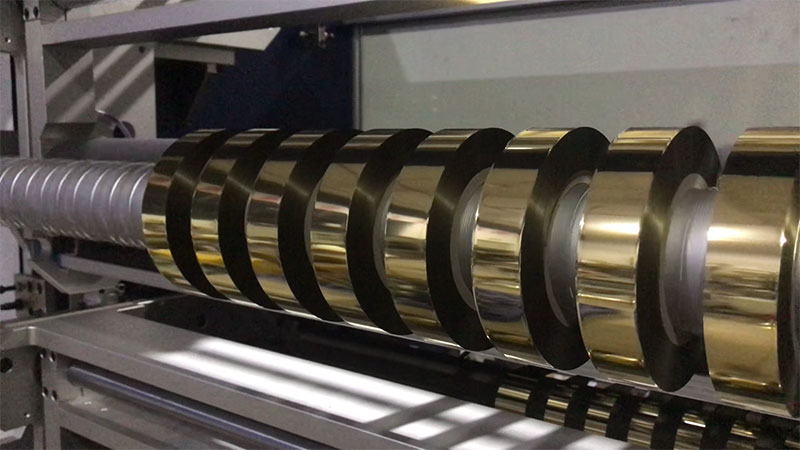
Precisely cut the wide master roll according to the preset dimensions, then rewind it into finished rolls suitable for subsequent processing or direct use.
09. December, 2025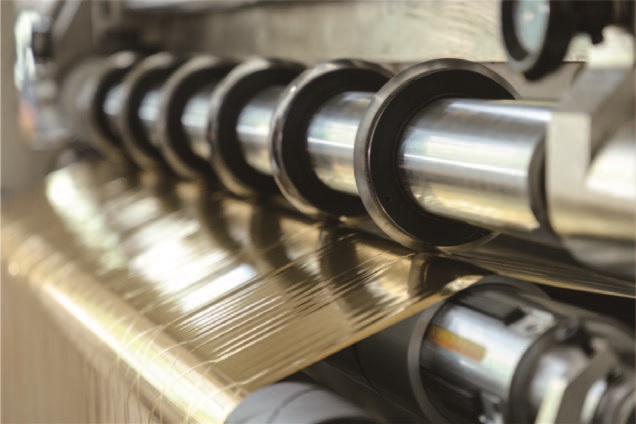
Cut wide rolls of film, paper, nonwoven fabric, metal foil, and other materials to precise sizes, and then rewind them into finished rolls that meet downstream requirements.
09. December, 2025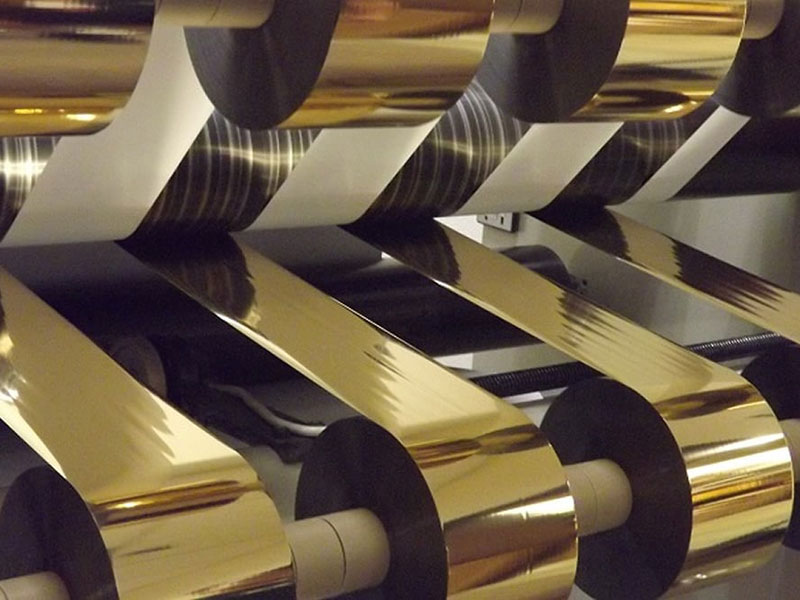
A slitting rewinder is a device that slices wide coils into multiple narrow strips of material and rewinds them into independent rolls.
09. December, 2025
An advanced slitting machine is like a powerful "invisible heart", continuously delivering precise, efficient, and healthy blood to the printing plant's hot stamping capabilities.
08. December, 2025
These devices integrate precision machinery, automatic control, and intelligent inspection technology to achieve fully automated processing from coils to finished products.
08. December, 2025